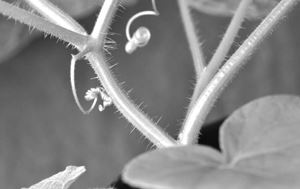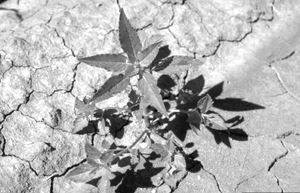Watch For Burcucumber And Toothed Spurge In 2015 Crops
COLUMBIA, MO.
Farmers should be on the lookout for two emerging weed pests in 2015. Burcucumber could reduce soybean yield as much as 48 percent, said University of Missouri Extension weed scientist Kevin Bradley at the recent MU Extension Crop Management Conference.
The summer annual weed resembles the cultivated cucumber. It has tendrils for climbing and sticky hairs. The climbing weed is difficult to control in soybean. It appears most in low-lying areas and near creeks and rivers.

Burcucumber can reduce soybean fields by almost half.
Credit: Bruce Ackley, The Ohio State University, Bugwood.org

Toothed spurge has become more common in soybean fields.
Credit: Phil Westra, Colorado State University, Bugwood.org
Bradley said its weighty vines also can lodge corn. Pre-emergence applications of atrazine or atrazine-containing pre-mixes will provide early-season control, but a post-emergence herbicide application usually is necessary.
The toothed spurge, another summer annual, is appearing in northwestern Missouri, Bradley said. It is often incorrectly referred to as a wild poinsettia. It is found in pastures and along roadsides and is becoming more common in soybean fields.
It can grow up to 2 feet tall and has light green to reddish green stems with short hairs. The leaves and stems emit a white milky sap when broken. The sap produces blisters and dermatitis in humans, cattle and horses and causes blindness if it comes in contact with the eye. For more information on toothed spurge, go to http://ipm.missouri.edu/IPCM/2014/7/Weed-of-the-Month-Toothed-Spurge/.
To learn more about burcucumber, go to http://ipm.missouri.edu/ipcm/2014/9/Burcucumber-An-Agronomic-Pest-on-the-Increase/.
MU Extension’s Weed ID Guide is available on the Web and as an app for Apple and Android mobile devices. Go to http://weedid.missouri.edu/. ∆